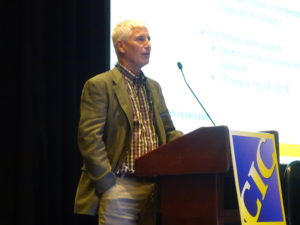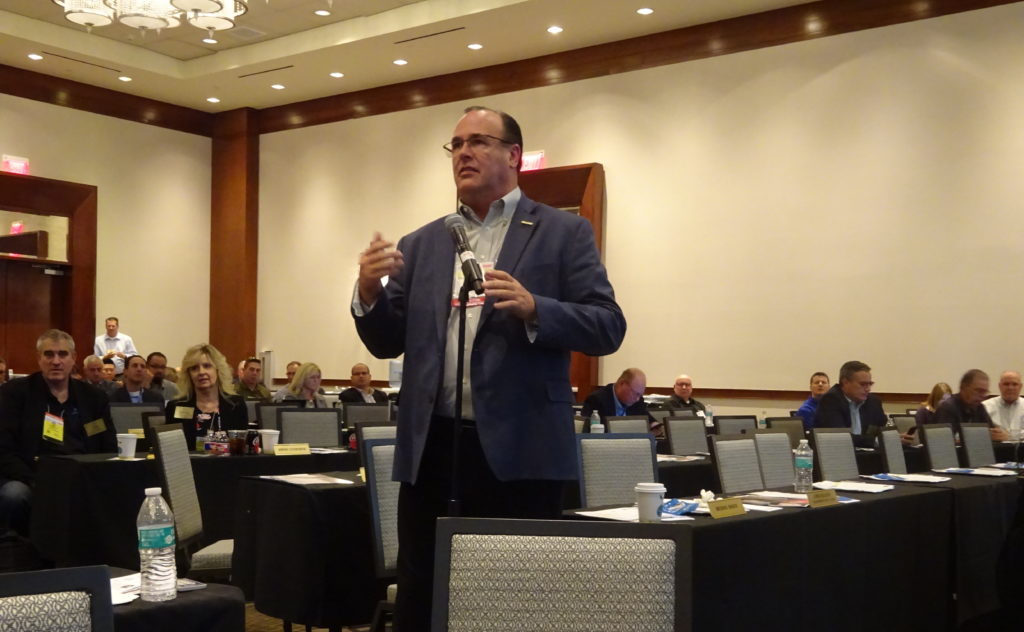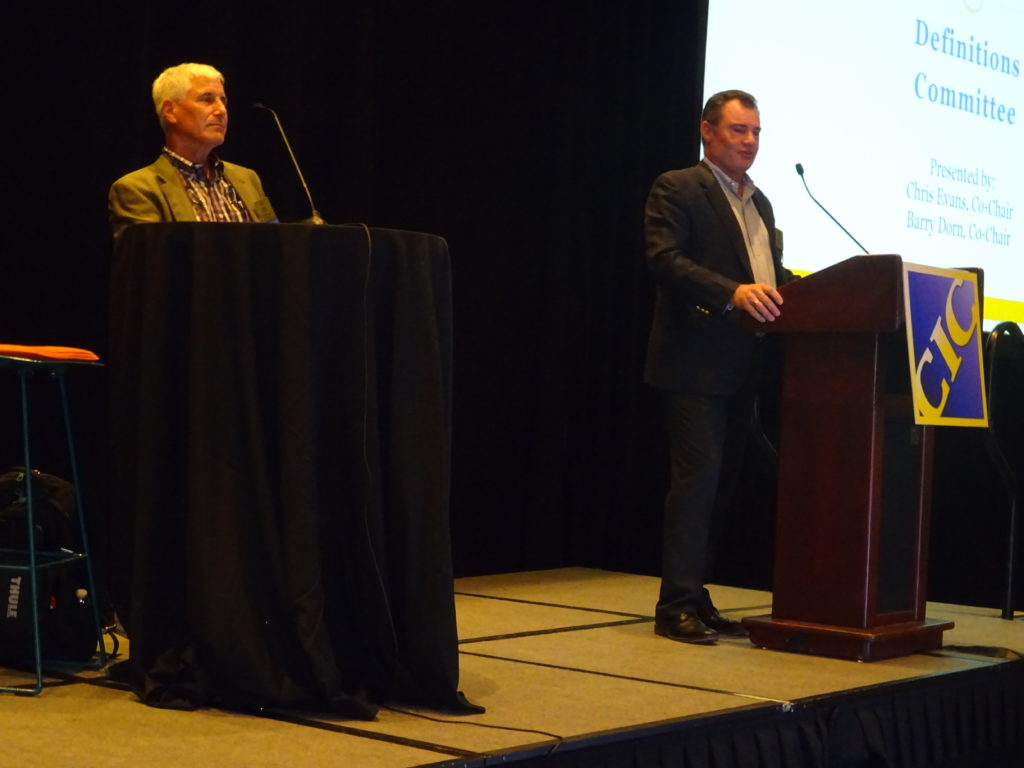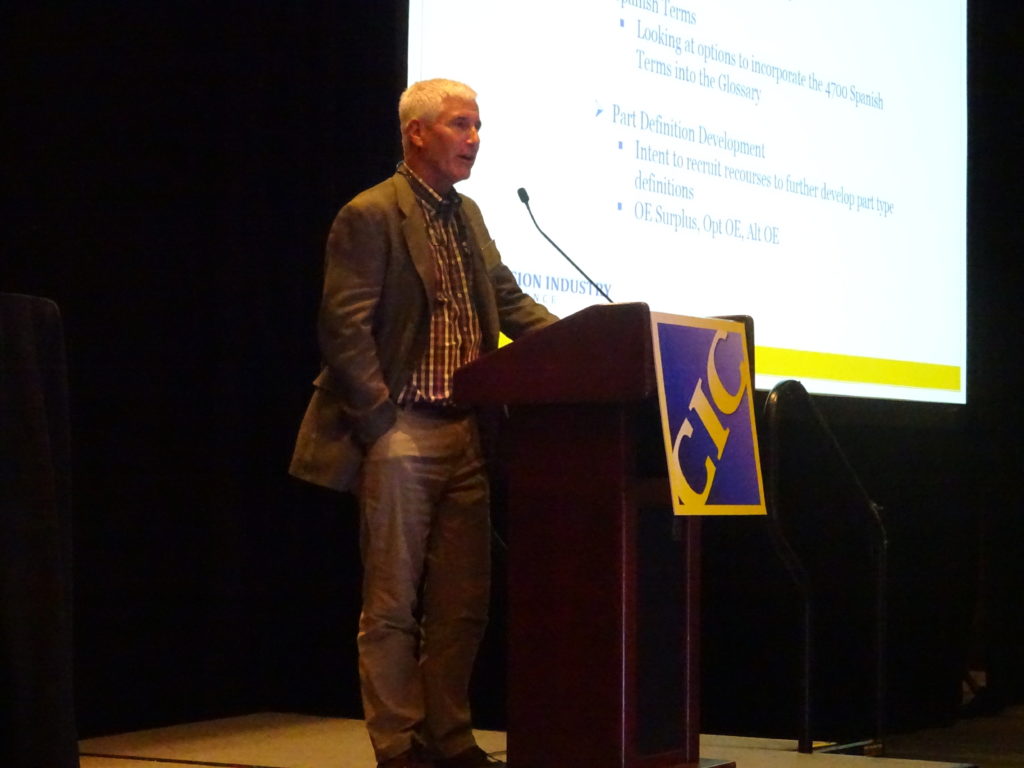
CIC hears calls for definition of parts classifications like ‘Opt-OE’
By onAssociations | Business Practices | Education | Insurance | Legal | Market Trends | Repair Operations | Technology
Following two California agencies’ declaration that state rules don’t support nebulous parts categories like “Opt-OE,” a parts importer and the CEO of Assured Performance urged Collision Industry Conference action on defining such terms.
The California Bureau of Automotive Repair and California Department of Insurance recently said no parts should receive terms like “Opt-OE” on an estimate. The state of California doesn’t recognize the category, and it might be misleading to consumers, according to both agencies. For the BAR, this position technically wasn’t anything new — the agency just emphasized the point and rewrote regulations to make its longtime stance clearer.
Apparently, nobody took the BAR seriously until this fall’s developments. Ken Weiss, director of business development for SSF Imported Parts, told the CIC that some suppliers have seen parts sales plummet in California.
Assured Performance CEO Scott Biggs said that he thought the BAR’s action on the “parts issue … threw it into even a deeper mess,” which he said might be a “slight understatement.”
He asked: Would the CIC let another entity decide the parts issue, or would the summit of industry stakeholders determine the answer and push it to governments?
He said “literally” nothing was done when the CIC last explored the issue, and so the BAR introduced its own rules.
“We can do better,” Biggs said, calling upon incoming CIC Chairman Jeff Peevy (Automotive Management Institute) to address the action during his two-year term.
Weiss said during the open mic section of the meeting Tuesday Biggs was “stealing my thunder” and called him “absolutely right.”
Weiss said an answer needed to be an “industrywide effort, which is what we do in this room.” Action was also needed because the industry had three estimating services and several parts procurement systems, and “they all call the same part something different,” he said.
Weiss said he sends SSF’s parts to a third-party administrator, and “it’s like sausage.” He said “I have no idea” how they appear, but he’s not necessarily happen with the outcome.
“You’re right on,” he told Biggs.
During the Definitions Committee presentation later Tuesday, committee Co-Chairman Chris Evans (State Farm) said Weiss approached him “a month or so ago” and said parts definitions in the industry’s glossary/wiki wasn’t very refined. (The BAR action occurred in September, while the CDI letter was dated in October.)
Evans said the issue was most recently heightened by the California BAR regulation — “I’ve heard it several times today,” he said — followed by the CDI opinion. The actions caused a little bit of a “stir,” and “companies reacted,” according to Evans.
Evens said Weiss, who is “quite impassioned” on the topic, contacted him, prompted Evans to ask Weiss to discuss the matter at CIC. The goal was to appeal to the audience or those elsewhere participants could influence to be part of “moving this forward,” Evans said.
Weiss said during the Definitions Committee session he has been involved in parts and identifying them for at least 25 years.
“I’m very passionate about it,” he said.
Weiss said the issue of Opt-OE parts arose in the Seattle 2016 CIC. “Nobody really knew what they were,” he said, and suppliers were “absolutely” abusing the term to sell aftermarket parts as “other than aftermarket.”
He said he thought shops and insurance regulators who were confused by the term had a valid concern.
The California BAR “reared their head” at the Anaheim, Calif., 2016 NACE later that year, and CIC still took no action, according to Weiss.
Last year, Weiss introduced to the wiki some updated parts definitions written with an eye towards the California BAR’s direction, he said. “We got no feedback whatsoever,” he said.
Weiss said that a year later, he didn’t even agree with all of his own terms. “We have to do it together,” he said.
Feedback from entities like information providers, parts suppliers, parts procurement portals, collision repairers and insurers was definitely or potentially needed, according to Weiss.
Standard parts definitions were necessary so parts could be described the same way regardless of estimating system, rather than having different descriptions not understood by anyone, Weiss said. The BAR said it wouldn’t support the concept of Opt-OE parts because it lacked a definition of that category, he said.
Weiss said that defining the parts could be a joint effort between the CIC Parts and Definitions Committees, or perhaps the work of an ad hoc committee.
He said there was no “competitive advantage” for any estimating platform to describe the parts differently.
Parts categories in CIC Wiki Glossary
According to the current version of the CIC Wiki Glossary, various types of parts include (minor formatting edits):
OEM: Original equipment manufacturer. Usually refers to replacement parts for a vehicle that were made by the same manufacturer as the car, (and purchased thru the OEM distribution system) rather than replacement parts made by a different manufacturer.
• Dealer OEM: New, undamaged, never used parts manufactured directly by the OEM or their approved designee distributed thru the OEM dealership network.
• Alternative Channel OEM: New, undamaged, never used parts manufactured directly by the OEM or their approved designee distributed independent of the dealership network.
• Surplus OEM: New undamaged, never used parts manufactured directly by the OEM or their approved designee distributed either thru the OEM dealership network or independently.
Non-OEM Aftermarket
• Certified Aftermarket: New, undamaged, never used parts manufactured other than by the OEM or their approved designee and recognized by an industry accepted certification entity, i.e., CAPA or NSF.
• Non-Certified Aftermarket: New, undamaged, never used parts manufactured other than by the OEM or their approved designee and not recognized by an industry accepted certification entity, i.e., CAPA or NSF.
Used
• Recycled OEM: previously used OEM manufactured parts taken from a salvage vehicle or another vehicle. Condition should be described using ARA accepted damage and location codes.
• Recycled Aftermarket Certified: Previously used Aftermarket Certified parts taken from a salvage vehicle or another vehicle. Condition should be described using ARA accepted damage and location codes.
• Recycled Aftermarket Non-Certified: Previously used Aftermarket Non-Certified parts taken from a salvage vehicle or another vehicle. Condition should be described using ARA accepted damage and location codes.
• OEM Blemished: Scarred or damaged OEM manufactured parts no longer to be considered new. Condition should be described using ARA accepted damage and location codes.
• OEM Take Off: Previously used OEM parts removed from a never sold OEM manufactured vehicle no longer to be considered new. Condition should be described using ARA accepted damage and location codes.
Rebuilt/Reconditioned: A used part that has been restored to OE standards and condition typically sold on an exchange (core) basis.
Opt OEM (Optional OEM) or Alt OEM (Alternative OEM): New OEM parts that may or may not be procured through alternate sources other than the OEM Dealer or parts distributor. OPT OEM or ALT OEM parts may reflect some specific, special, or unique pricing or discount. These parts may include assemblies.
Economy Part: Any new vehicle part of accessory that is purchased from a source other than the OEM parts distribution network also described as Aftermarket or Non-OEM.
The subset of terms below are terms identified by California legislative/regulatory resources.
• OEM: New replacement parts manufactured by or for the vehicle’s Original Manufacturer and obtained through the OEM’s authorized parts distribution system. Carries OEM warranty.
• Non-OEM Aftermarket: New replacement parts obtained through non- OEM authorized parts distribution system. These parts may be of OEM or non-OEM manufacture. Does not carry OEM warranty.
• Used: Parts previously installed and used on another vehicle. Typically assumed to be of OE manufacture.
• Rebuilt: A used part that has been restored to OE standards and condition. Typically sold on an exchange (core) basis.
• Reconditioned: At part removed from a customer’s vehicle, restored to original specifications and condition, and reinstalled on the vehicle
More information:
Collision Industry Conference wiki
Images:
Ken Weiss, director of business development for SSF Imported Parts, on Oct. 30, 2018, urged the Collision Industry Conference to work on definitions for parts classifications. California regulators have blocked terms like “Opt-OE.” (John Huetter/Repairer Driven News)
Assured Performance CEO Scott Biggs on Oct. 30, 2018, asked the Collision Industry Conference if it would let another entity decide the Opt-OE parts issue, or would the summit of industry stakeholders determine the answer and push it to governments? (John Huetter/Repairer Driven News)
Left, Ken Weiss, director of business development for SSF Imported Parts, on Oct. 30, 2018, urged the Collision Industry Conference to work on definitions for parts classifications. California regulators have blocked terms like “Opt-OE.” CIC Definitions Committee Co-Chairman Chris Evans (State Farm) is at right. (John Huetter/Repairer Driven News)



